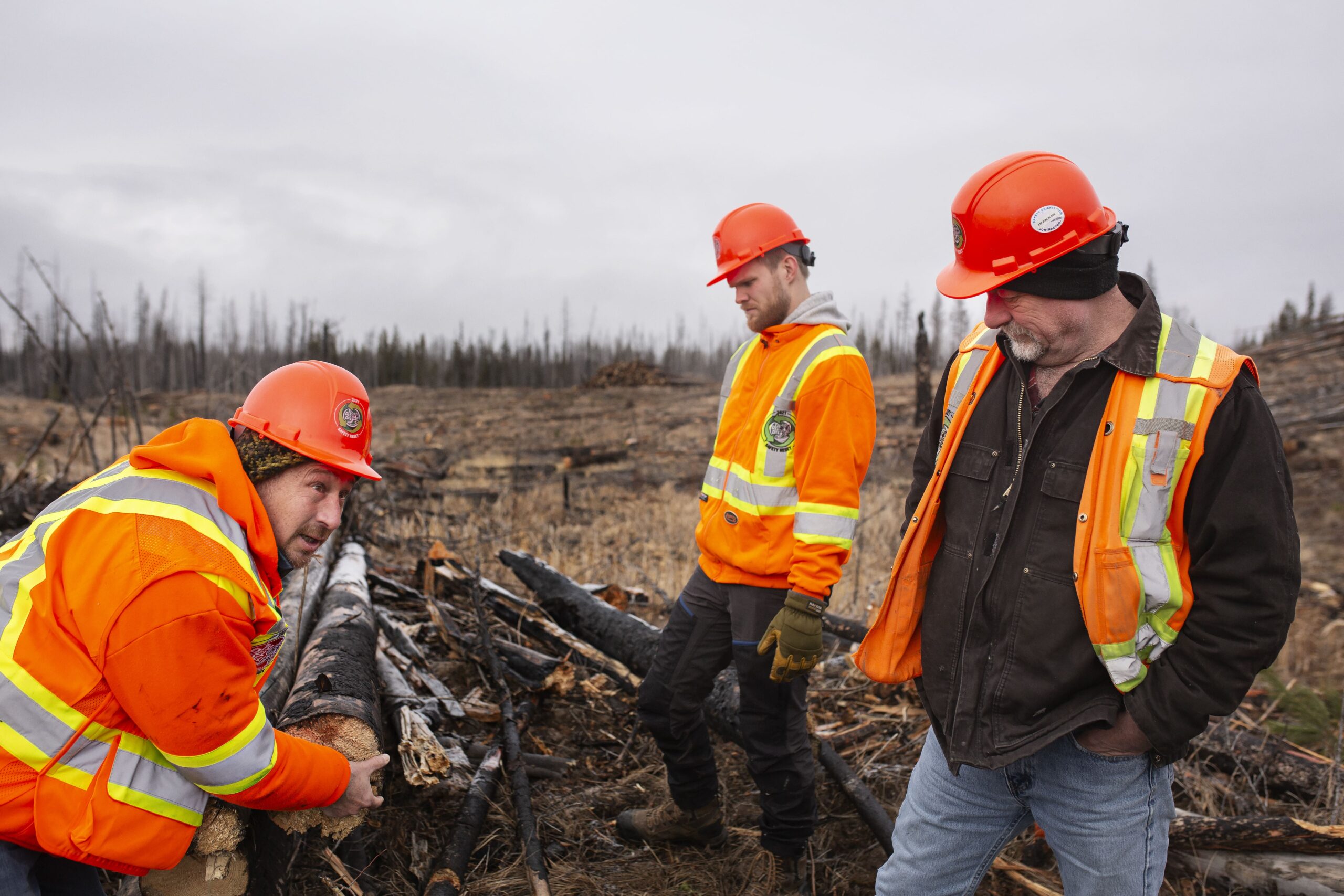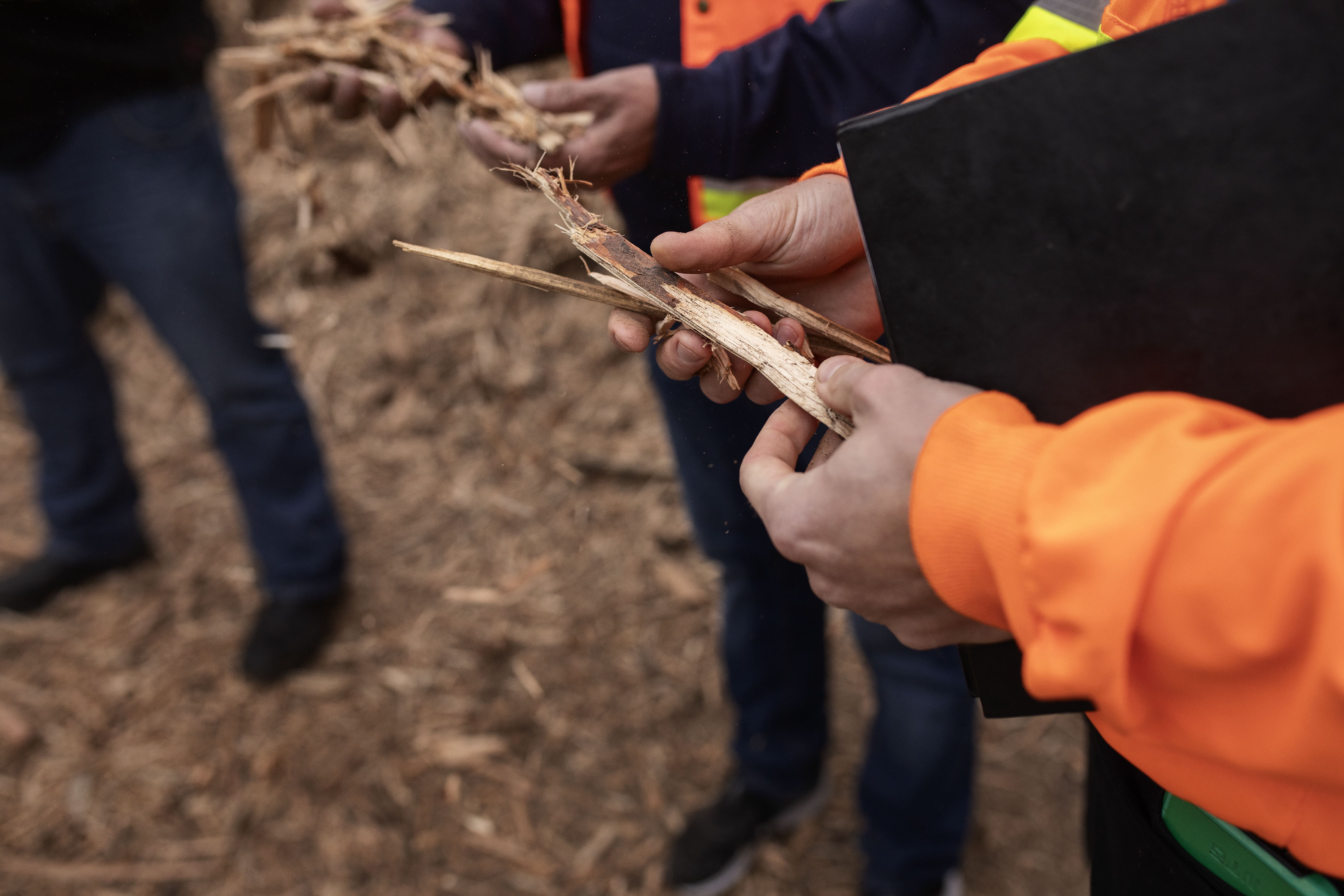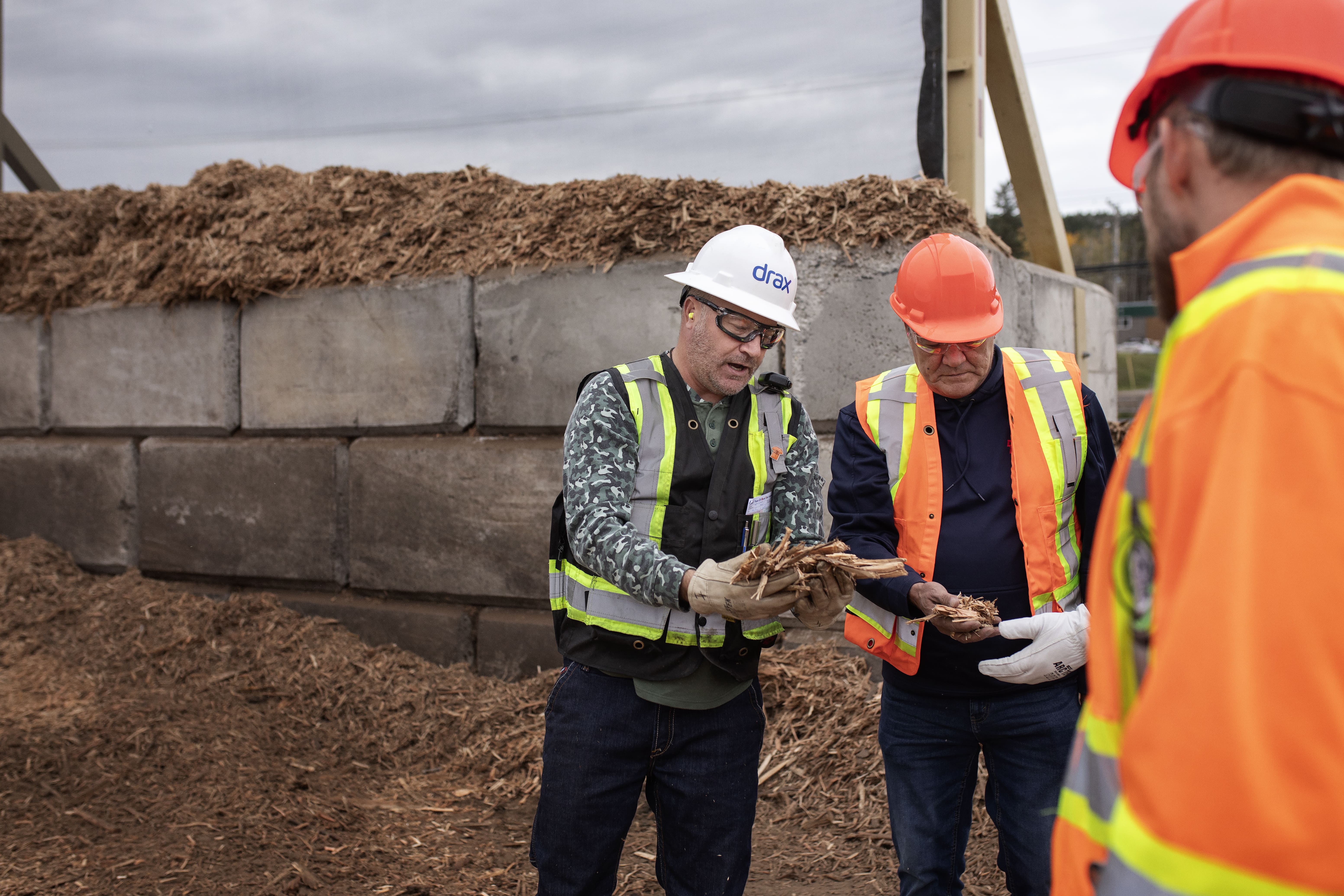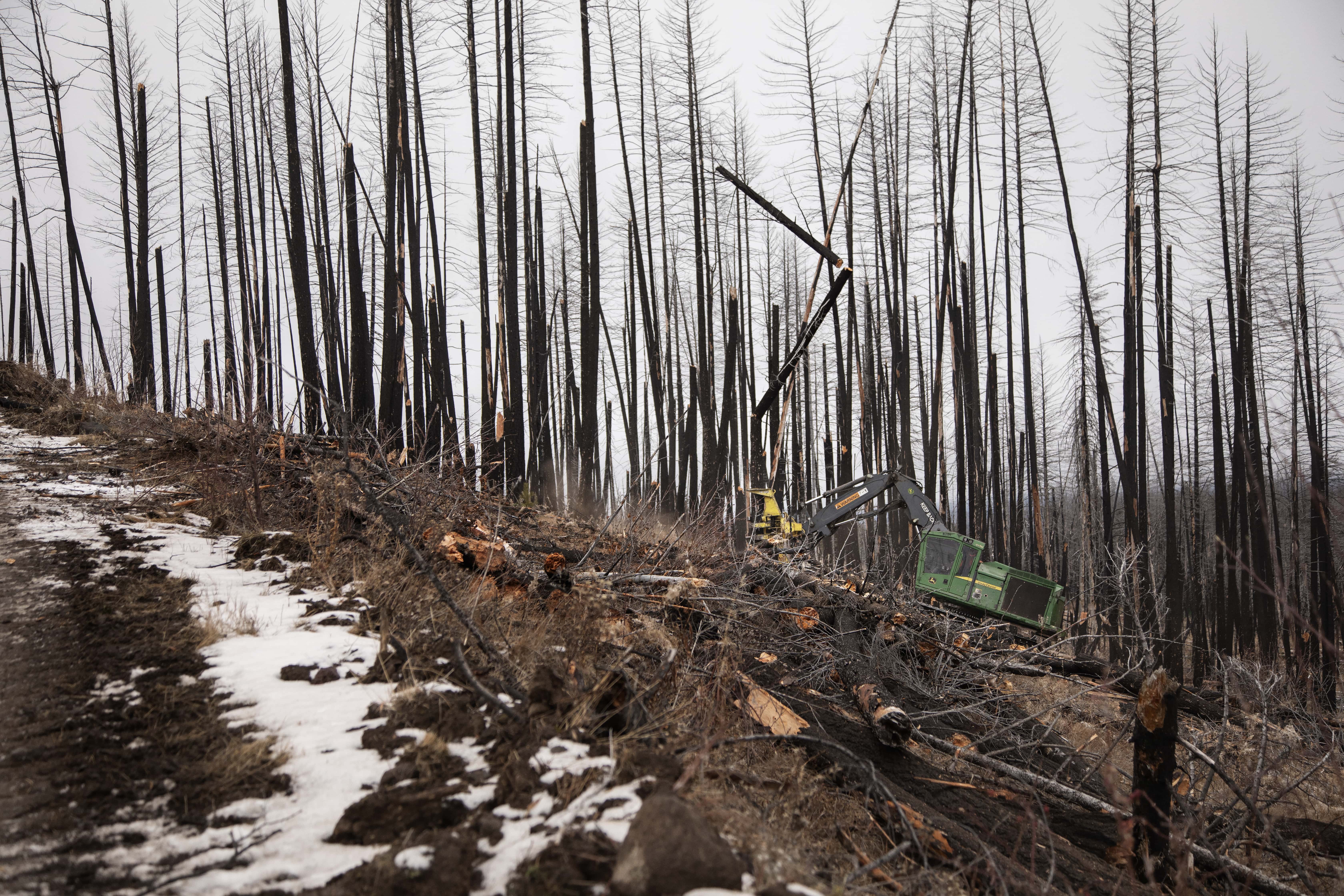Williams Lake, B.C. – Central Chilcotin Rehabilitation Ltd. (CCR), a First Nations-owned and operated company, has been making significant strides in the forest industry through their participation in wildfire risk reduction, stand rehabilitation and fibre utilization projects. CCR is a joint venture between the Tŝideldel First Nation and Tl’etinqox Government, both Tsilhqot’in Nation communities, dedicated to safeguarding the land through traditional Indigenous practices. Over the past few years, CCR has received vital support from the Forest Enhancement Society of BC (FESBC), including recently announced funding for three fibre utilization and wildfire risk reduction projects.
These newly funded projects come as a result of the $50 million given to FESBC earlier this year by the Ministry of Forests aimed at increasing the use of low-value or residual fibre including trees damaged by recent wildfires and waste left on site after logging that would otherwise be burned.
“These projects will help keep communities safer from wildfire, create new jobs and provide much needed fibre for mills and bio-energy plants,” said Minister of Forests Bruce Ralston. “Better fibre utilization, reducing greenhouse gas emissions and mitigating the spread of wildfires makes a real impact on improving the lives of First Nations, rural communities and forestry workers throughout B.C. Thank you to FESBC for leading the way on these vital programs.”
One of the projects CCR received funding for allows for the full utilization of trees and harvesting debris including tree tops originating from stands of dead trees killed by the mountain pine beetle years ago. This low value fibre will be hauled to facilities to turn into different products like electricity, pulp, and pellets instead of piling wood debris in slash piles and burning. The recovered fibre will help support the Cariboo pulp mill in Quesnel and the Drax pellet plant and Atlantic Power facility in Williams Lake.
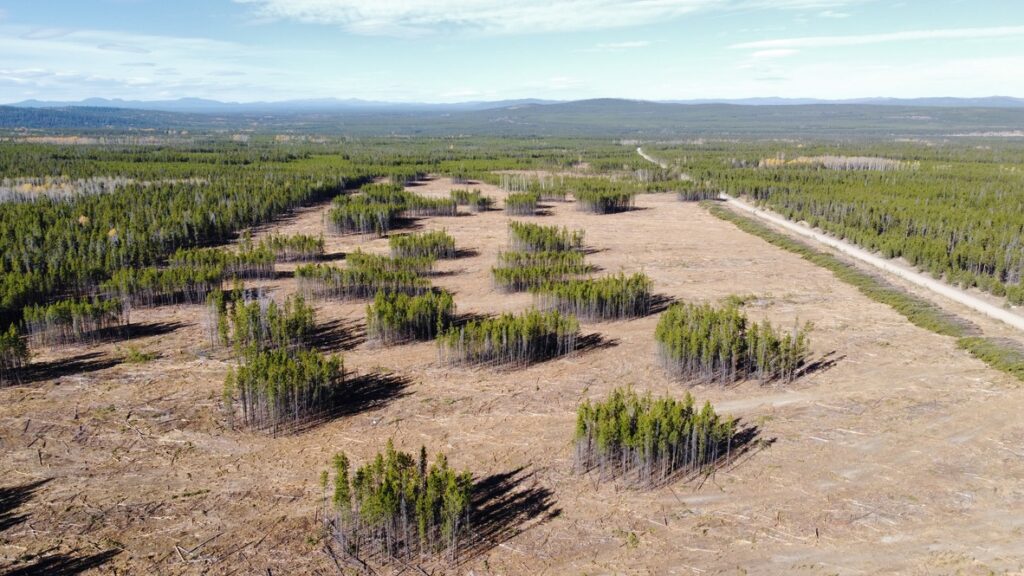
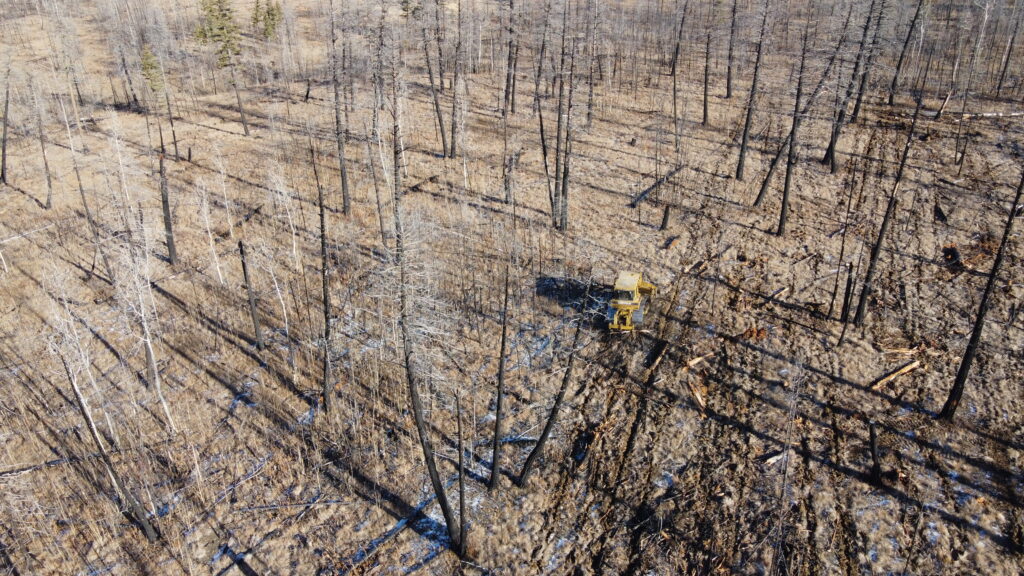
DCIM\100MEDIA\DJI_0733.JPG
Photo credit: CCR.
Frankie Nelson, Business Manager of Atlantic Power, noted, “Historically, the Atlantic Power plant has almost exclusively consumed wood residues from local sawmills. The impact of the mountain pine beetle infestation, the area wildfires over the past few years, the reduction in the timber harvest, and the increased competition for fibre have reduced the availability of mill residues. Without a stable fuel supply, Williams Lake is at risk of losing its largest taxpayer, along with quality jobs and a local outlet for wood waste from area mills that aids in their competitiveness. CCR has been instrumental in sourcing and delivering an otherwise uneconomic fuel — roadside logging debris in part with FESBC. We have been able to not only create new jobs and procure a much-needed new fuel supply, but we are now utilizing a product that would otherwise be open-burned, and instead, we are turning wood waste into green energy.”
Through this utilization, CCR is making a meaningful contribution to the forest industries Greenhouse Gas (GHG) reduction efforts. Using 50 m3 of wood at the energy plant that would normally be slated for burning is equivalent to removing 1.8 medium sized vehicles off the road for one year.
Photos Row 2 : Crews from CCR removing dead standing trees burned in the 2017 Elephant Hill Wildfire;
Photos credit: Tiffany Christianson Photography.
“Over the last four years, close to one million cubic metres of fibre has been recovered in our region, and much of the recovery work was supported with funding from FESBC’s fibre utilization program. If not recovered, this fibre – which is equivalent to over 10,000 logging trucks of fibre – would either have been left behind and increased fuel for wildfires or burned in slash piles. Recovering the fibre results in both reduced wildfire risk and greenhouse gas emissions,” said Percy Guichon, executive director of CCR and councillor with Tŝideldel First Nation.
In another FESBC-funded project, the CCR team will work to rehabilitate the forests devastated by the Elephant Hill fire in 2017. By removing fire-damaged timber and fibre and transporting it to local facilities such as the Drax pellet plant and Atlantic Power Corporation in Williams Lake, and the Kruger pulp mill in Kamloops, CCR will be providing a safe working environment for planters who will reforest the area. According to Philippe Theriault, general manager of Tŝideldel Enterprises, “FESBC’s support has enabled us to maximize fibre utilization through innovative projects, not only reducing CO2e emissions from traditional slash-pile burning but also sustaining jobs in the pulp, pellet, and energy industries. This partnership exemplifies that positive outcomes are possible when organizations collaborate for the greater good of our forests and the rural communities they sustain.”
Apart from the work on fibre utilization, CCR has continued to improve wildfire resilience and reduce wildfire risk to the surrounding rural communities. An example is an upcoming project where CCR will work on a landscape-level fuel break adjacent to the Tl’etinqox reserve, Alexis Creek, and a significant portion of Highway 20, with FESBC funding. FESBC Senior Manager, Gord Pratt said, “FESBC is proud to work with CCR, who is a leader in taking the initiative to reduce the wildfire risk to many communities and increasing the utilization of fibre that for many years went to waste in smoke.”
CCR has completed over 40 kilometres of fuel breaks, where trees in planned landscape fuel breaks were carefully thinned or removed to reduce the fuels that would be contributing to potential fast-spreading wildfires, protecting First Nation communities and neighbouring communities of the Chilcotin. These fuel breaks involve a wide range of undertakings, surrounding hand treatments, fuel removal, spacing, and advanced silviculture, synchronized in a manner to reduce the wildfire risk while creating a resilient forest stand for the future. The complexity and challenge of these projects create wide employment opportunities, which helps support families that live on their traditional land base, something Tŝideldel and Tl’etinqox both completely support.
“As a professional forester deeply committed to First Nation-led Forest management, I am grateful to the Forest Enhancement Society of British Columbia and the Province of British Columbia. Their unwavering financial support for the past five years has been instrumental in the success of CCR. Together, we’ve achieved significant milestones in site rehabilitation, fire hazard reduction, and the construction of vital fire breaks around the Tŝideldel First Nation and Tl’etinqox Government communities,” said Theriault.
FESBC would like to gratefully acknowledge the financial support of the Province of British Columbia through the Ministry of Forests.

